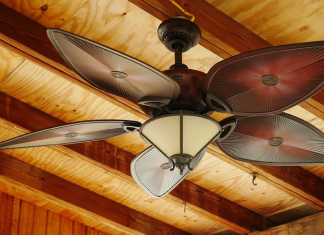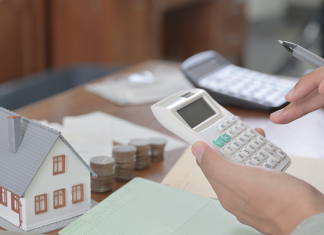Glazing materials make or break greenhouses. Generally, they enable greenhouses to protect plants from fluctuating temperatures, shifting light levels, and changing precipitation. They also protect the structure from harsh weather. So, when choosing a glazing material, you may have to consider your location, needs, and budget. You may also need to think about the prevailing weather patterns in your place.
Suppose you’re planning to build your first-ever greenhouse. In that case, you may need to know the best greenhouse glazing materials. Doing so will help you identify the different options suitable for your needs, budget, and location. For that purpose, here’s an article to guide you. So, read on!
1. Polycarbonate Greenhouses
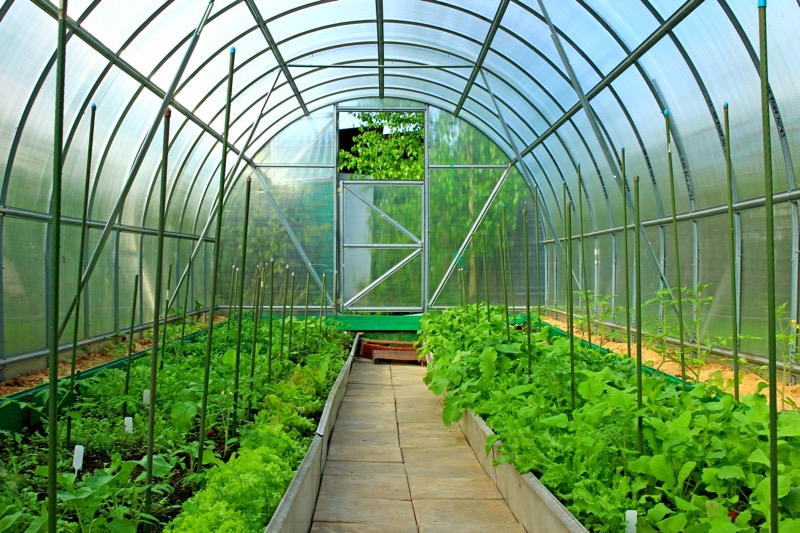
Polycarbonate greenhouses use polycarbonate glazing. This is the safest type of glazing, as it’s made from plastic, so there’s no risk of smashed glass causing harm to anyone by accident. Swgreenhouses.co.uk sell polycarbonate greenhouses in the UK, including a range of both aluminium framed and wooden framed greenhouses.
The type of greenhouse frame you choose depends on your garden and personal needs; wooden is more traditional but heavier and expensive, whereas aluminium is more modern and cheaper. You should consider the type of plants you wish to grow as well as polycarbonate is slightly translucent compared to greenhouse glass, which is transparent.
Polycarbonate glazing is also known for its better light diffusion and UV protection. Many polycarbonate greenhouses are quicker to install compared to the traditional structures. Furthermore, they come in various shapes and sizes. You may find a lot of inexpensive polycarbonate greenhouse materials, making your greenhouse construction manageable. In addition, polycarbonate is more sustainable than other standard options.
To keep the polycarbonate greenhouse in good condition, you may need to clean it regularly. You may use a broom, dish soap, and squeegee window cleaner for this. These tools can help remove the debris and leaves on the floor and shelving. After cleaning, you may use a microfiber towel to ensure that the glass is free from blemishes.
2. Glass Greenhouses
Glass greenhouses, on the other hand, have a luxurious appeal, ideal for residential and commercial greenhouses and better garden ideas. They’re also a durable structural framing and highly resistant to UV radiation, making them ideal for greenhouse plants. Glass greenhouses are also less dependent on lighting as they could allow 80% or more light transmission.
If you prefer glass glazing materials, you may need to know more of the following types:
- Floated
This type of glazing material is scratch-free and is characterized by even surfaces.
- Insulated
If you’re looking for a glass with insulating properties, you may consider this option. It’s energy-efficient and reductive against heat loss and gains.
- Low-Iron
If you prefer optimal light transmission, you may choose low-iron glass.
- Safety
Shatter-proof safety glasses are known for their heat and impact resistance and UV protection.
The biggest drawback of glass greenhouses is their fragility. Although glass glazing products have different brittleness, most of them can’t withstand extreme weather elements, such as winds and hails. Because of this, many consider glass greenhouses expensive and challenging to maintain.
3. Plastic Film Greenhouses
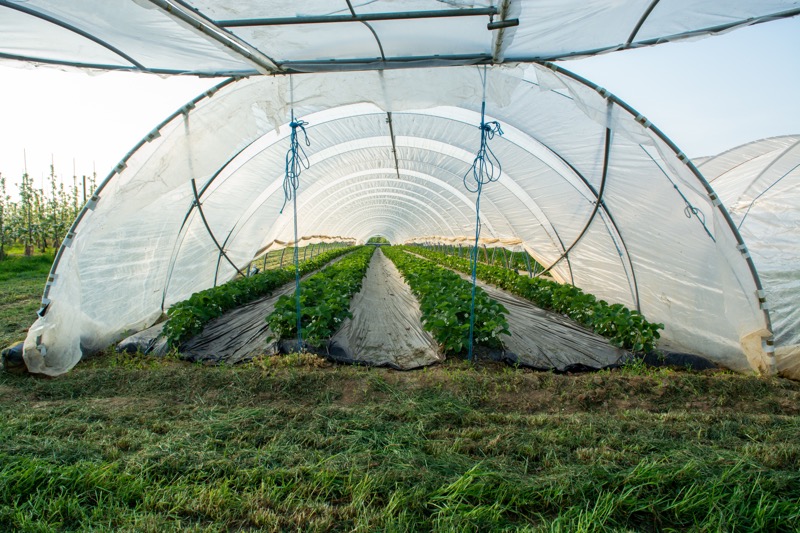
Plastic film greenhouses use polyethylene products as the structure’s covering. Typically, it’s less expensive than other glazing materials. They also allow controlled diffusion and top-notch light transmission. Most plastic films contain photo-selective qualities that could absorb or reflect particular light wavelengths, adjusting the light that passes through them.
However, plastic films are also known to degrade after being exposed to extreme heat for an extended time. They’re more prone to tear and wear, abrasion, and scratches, leading to early replacement and extra expenses.
In cleaning plastic films, you may use an oxygen bleach solution. Place a small amount of the solution on a spotless rag and use it to wipe the film in a circular motion to prevent them from blurring. You may need to use 6-millimeter-thick types for the best plastic film installation as they’re more durable.
4. Fiberglass Greenhouses
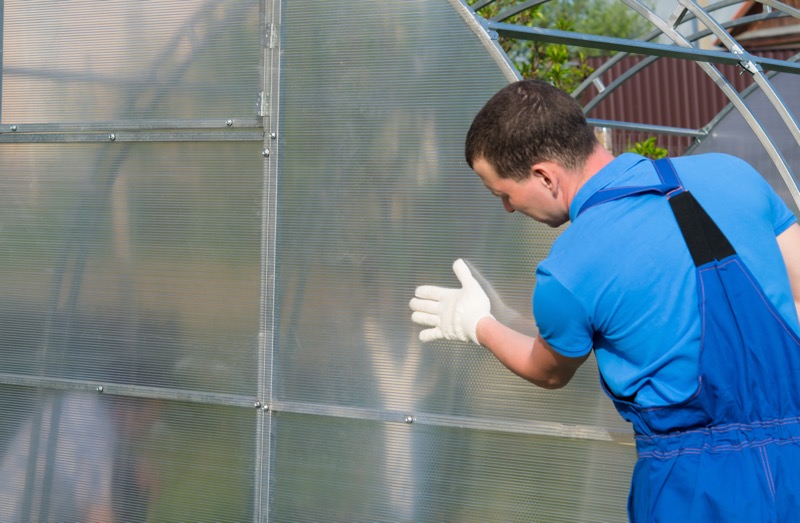
Fiberglass types are durable and highly insulating. They’re also lighter than glass and are not as costly as the other alternatives. These glazing materials are also customizable since they’re easy to cut and install. Furthermore, they allow ample light transmission for plant growth.
However, fiberglass can turn yellow after a particular time, making it less transparent. Also, it tends to blur and become unattractive. Fiberglass greenhouses are also combustible, so a fire extinguisher is necessary if you choose this material.
You may use cleaning solutions for synthetic materials, such as plastics, in cleaning fiberglass. Apart from this, you may utilize warm water and white vinegar. Use a microfiber cloth in applying the solution to the fiberglass surfaces. Alternatively, you may use a gentle liquid soap to buff the fiberglass. Wax them to maximize their aesthetic appeal.
5. Acrylic Greenhouses
Most acrylic greenhouses can transmit more than 90% of light. They can withstand impact better than glasses but less than polycarbonate. They’re highly affordable and recyclable. The downside of acrylic materials is their low customizability and installation difficulty because they don’t work well with drilling and cutting.
To enhance the acrylic covering, you may treat it with a glazing liquid to make it more resistant to UV. This process also reduces the effects of condensation. If you want a more durable option, you may think about double-paneled acrylic.
To maintain acrylic sheets, you may use a blow dryer to remove their dust at least once a month. Then, use a microfiber cloth with a soap solution to make the sheets clear. Lastly, dry the solution using a moist cloth to avoid water spot formation. When properly maintained, acrylic greenhouses can reach 20 to 25 years.
Wrapping Up
Glazing materials play the most significant role in enabling greenhouses to achieve their purpose. While they have different strengths and weaknesses, most of them ideally fit a particular setup and plant needs. Because of this, you may need to delve deeper into what they can offer to know which suits your needs.
Suppose you’re planning to build a greenhouse anytime soon. In that case, you may consider reading this article to know which best suits the plants you want to grow, such as tomatoes or lettuce. For more ideas, you may ask seasoned gardeners about their ideal greenhouse build and the appropriate glazing materials for your location.










